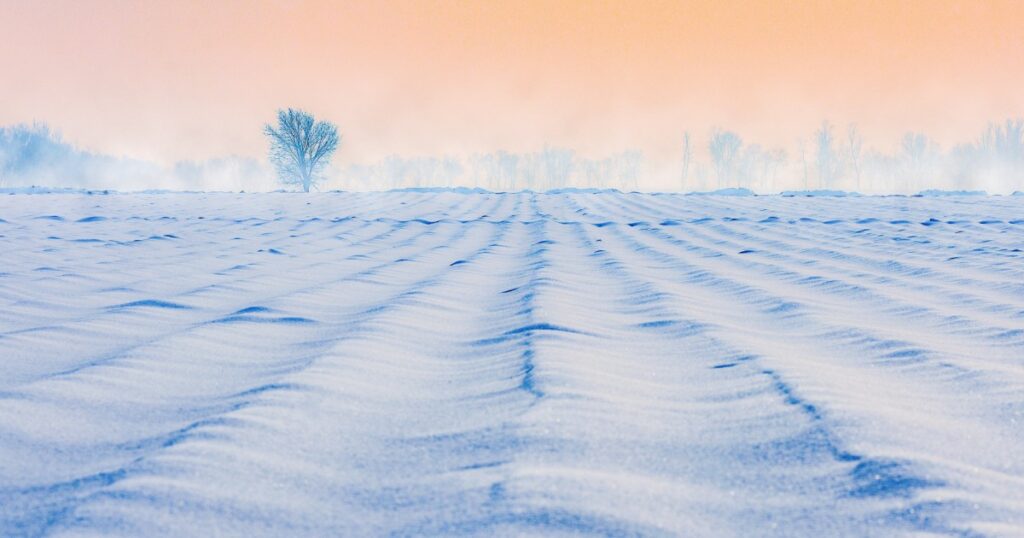by Tom Raabe
My pastor said this from the pulpit a few Sundays ago: “If you’ve never lived in a place where it snows, I pity you.” That statement conjured up images of sitting before a blazing fireplace sipping hot chocolate while listening to Perry Como and observing through a frosted windowpane harmless flakes float docilely to the ground. He continued: “If you live now in a place where it snows, I also pity you.” Which generated memories of scooping and scraping and bundling up. He got laughs with both comments.
Such is the humor available to a pastor living in Phoenix, Arizona, in the justly named Valley of the Sun. If a mere hint of Schadenfreude seeped into his comments, I doubt the feelings of any of the native Upper Midwesterners sitting in the pews that December Sunday were hurt. Indeed, many were sitting there precisely because of snow — they were fleeing it.
I grew up in Milwaukee — no stranger to the white stuff is that fair city — and then lived for nine years in Grand Rapids, Mich., a town encased in a snow globe turned upside down every night and then set upright every morning. I know snow, too.
Snow is fine, in a theoretical sense, as a conjurer of memories, as an idea. But it’s not that great when it’s at the end of a shovel, or under the tires of your car, or blocking your driveway, or collapsing the roof of your garage, or coming at you sideways in the form of hard pellets pockmarking your face as you tramp through waist-deep drifts on your way to Grandmother’s house.
Not that we who live in the desert are free and clear weather-wise. Dry heat or not, leaving your air-cooled abode and striding into 110-degree temperatures is like walking into a furnace. I absolutely hated the heat for the first two years I lived here. The only positive about summer weather in Arizona that I could come up with was that the coffee I left in my car was as hot on the way home from church as it was on the way to church.
But in the theological metaphor department, heat is bad (see: hell) and snow is good. In fact, snow is arguably the most effective meteorological metaphor for the eternal truths of theology. Rain has some theological potential — the rain comes in, offers life-giving moisture, dissolves the smog, and washes the world clean. Wind is associated with the Holy Spirit (see Pentecost) and, likewise, good in moderation — it fills our lungs and drives out the pollution and all that.
But snow has it over any other meteorological phenomena for Gospel symbolism.
It falls, and the ugliness of an unsightly landscape disappears. Dirt, decay, dilapidation — all are erased by two or three inches of newly fallen snow. The repentant person in Isaiah or the Psalms is rendered pure, as sins that were scarlet are turned white as snow, erased by Jesus’s sacrifice.
There is nothing so pure as the scene after an all-night, heavy-duty snow dump. The yard is pristine, the sidewalks unmarred, the street outside your house trackless, any sound of cars or trucks muffled, even silenced, possibly because the snow kept the noisemakers off the roads, possibly because the engine sounds cannot penetrate the thick canvas that settled overnight. If it’s early enough, before the neighborhood awakens and the kids stream from their houses to start their snow days making snow angels and snow forts and snowmen, you can enter this world of stillness and allow the silence and the purity to sweep over you and cleanse your very being.
It is cathartic and joyous and, like the cleansing that God’s forgiveness offers, it freshens your spirit, changes your outlook.
And if the sun’s out, and you have to squint and shield your eyes just to look at the snowy tableau, you are reminded, too, of our Savior on the Mount of Transfiguration. There, Mark tells us, Jesus’ “clothes became radiant, intensely white, as no one on earth could bleach them” (Mark 9:3). You get a blinding glimpse, too, of what we also will look like when we join Jesus, as the three disciples did on Mount Herman, and are clad in eternal robes as white as snow.
On that day, we will see the Lord as John once saw Him in the book of Revelation, where Jesus’ appearance is again described with an image of snow: “The hairs of his head were white, like white wool, like snow” (Rev. 1:14).
So let it snow … theologically speaking.
Tom Raabe is a member of Christ Church—Lutheran in Phoenix.





